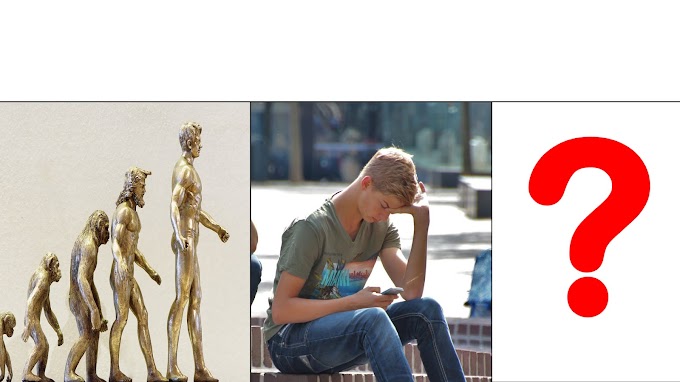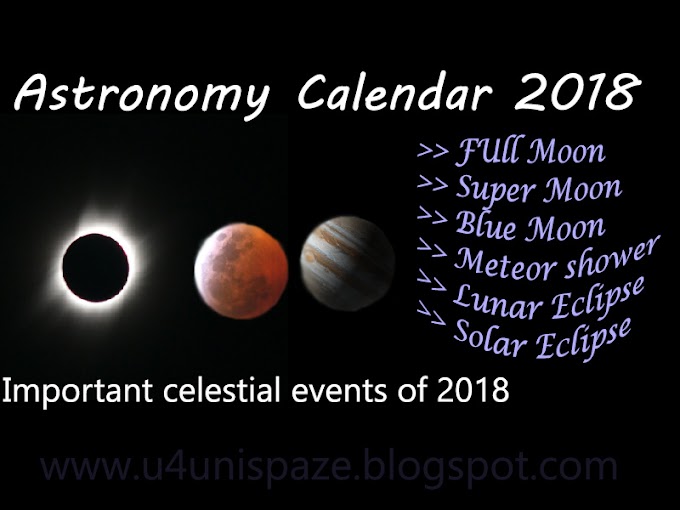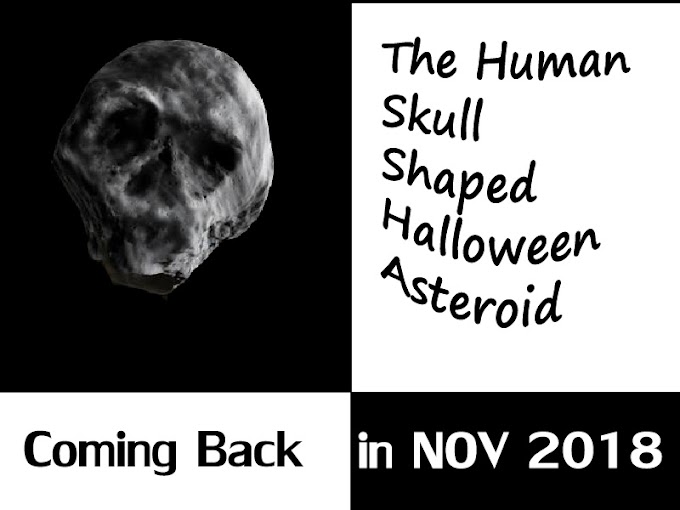JAN 2nd: Astronomical evens in 2018 is
starting with a full moon on January 2nd.
This full moon will be a supermoon. Moon
will be at the closest point to earth. The supermoon
will be 12 percent to 14 percent brighter than the ordinary full moon.
JAN 3 and 4: This year
Quadrantids meteor shower will be at its peak on 3rd and 4th
January. Up
to 40 metroids
are visible during its peak. More Metroid will be visible at 3rd midnight and 4th-morning
sky. On January 3rd earth will
be on perihelion, Its closest point to the sun.
JAN 31st: Full Moon, Super Moon, Blue
Moon and a total Lunar eclipse visible in
North America Eastern Asia and Australia.The second
full moon of a month is called as the blue moon.
#2 February
FEB 15: A partial solar eclipse will be visible to North America.
#3 March
MAR 15: Greatest time to observe Mercury.The planet will reach 18.4 degrees
from the sun it will be its greatest eastern elongation. The planet Mercury
will be visible in the western sky just after sunset.
MAR 20: March Equinox, On this day sun, will shine directly on the equator.
Equal Day and Night will be experienced around the globe. This is also called
as the vernal equinox.
#4 April
APR 22 and 23: April 22 and 23 will be the days of another firework in the
sky, The Lyrids Meteor Shower. It is an average shower up to 20 meteors will be
visible in the sky. This Metroid shower occurred due to the dust particles left
behind by comet C/1861 G1 Thatcher.
APR 29: The planet Mercury will be at its highest western elongation. It will
reach a western elongation of 27 degrees from the sun.
#5 May
MAY 6 and 7: Eta Aquarid Meteor shower is capable to produce up to 60 meteors
at its peak time. This meteor shower is visible in the northern hemisphere.
This Metroid showed occurred by the dust particle left behind by the comet Halley.
MAY 9: The planet Jupiter will be at its closest approach to earth.It will
be brighter and visible all over the night.
#6 June
JUNE 21: June solstice, It will be the longest day of the year in the northern
hemisphere. North pole of the earth will be tilted towards the sun and sunlight
will directly fall on tropic of cancer.
JUNE 27: Saturn will at its closest approach to earth. It will be brighter
than any other time of the year.
#7 July
JULY 13: Partial solar eclipse will be visible in South Australia and Antarctica.
JULY 27: Total lunar eclipse visible in most part of the world.The moon
will pass through the earth’s dark shadow.
JULY 28 and 29: Delta Aquarid meteor shower is an average shower that can
capable of produce up to 20 Metroid per hour.This shower can see annually from July
12 to August 23. It will be at it's peeking on July 28 night and 29th
morning.
#8 August
AUG 11: The partial solar eclipse on August 11th will be
visible in the most part of the world.It will be best seen in northern Russia.
AUG 12 and 13: Perseid Meteor Shower is one of the best meteor showers
for the observers. It can produce up to 60 meteors per hour in its peak hours.
Most meteors can be visible on the night of August 12 and morning of August 13.
AUG 17 : Venus at its greatest eastern elongation. It will reach an elongation
of 45.9 degrees from the sun.The planet will be visible in the western sky
after sunset.
#9 September
SEPT 7 : Neptune will be at it’s closest approach towards earth. It will
be visible all over the night and the brightest of all time in the year.
#10 October
OCT 8 : Daracoinds Meteor Shower is a small meteor shower which will produce
up to 10 meteors per hour. It is produced by the dust particle left by the
comet 21P Giacobini-Zinner.
OCT 21 and 22: Orionids Meteor Shower is an average meteor shower which is
capable of producing up to 20 meteors per hour in its peak hours.It was
produced due to the dust left by the comet, Halley.
OCT 23: Uranus will beat its closest approach to earth and it will be
more bright than any other time of the year.
#11 November
NOV 5 and 6: Taurid Meteor Shower is the longest meteor shower. This will
run from the September 7th to December 10th of every
year. It is produced by the dust particles of Asteroid 2004 TG10 and Comet 2P Encke.
NOV 17 and 18: Leonids Meteor Shower is an average shower which is
capable of producing up to 15 meteors per hour.This shower is occurred due to
the dust particles left behind by the comet Tempel-Tuttle. This shower is
famous for is peak time comes one in 33 years.During its peak, hundreds of
meteors can be seen.The last peak shower occurred in 2001.
#12 December
DEC 13 and 14: Geminids Meteor Shower is capable of produce 120 meteors
in its peak time. It is produced due to the dust particles produced by the asteroid
3200 Phaethon.It will be visible from December 7th to 17th
but it will get its peak on 13 night and 14th morning.
DEC 21: December solstice, the longest night of the year in the northern
hemisphere is on December 21st.
DEC 21 and 22: Ursids Meteor Shower is the last meteor shower of the
year.It is capable of producing up to 10 meteors in its peak hours.










0 Comments